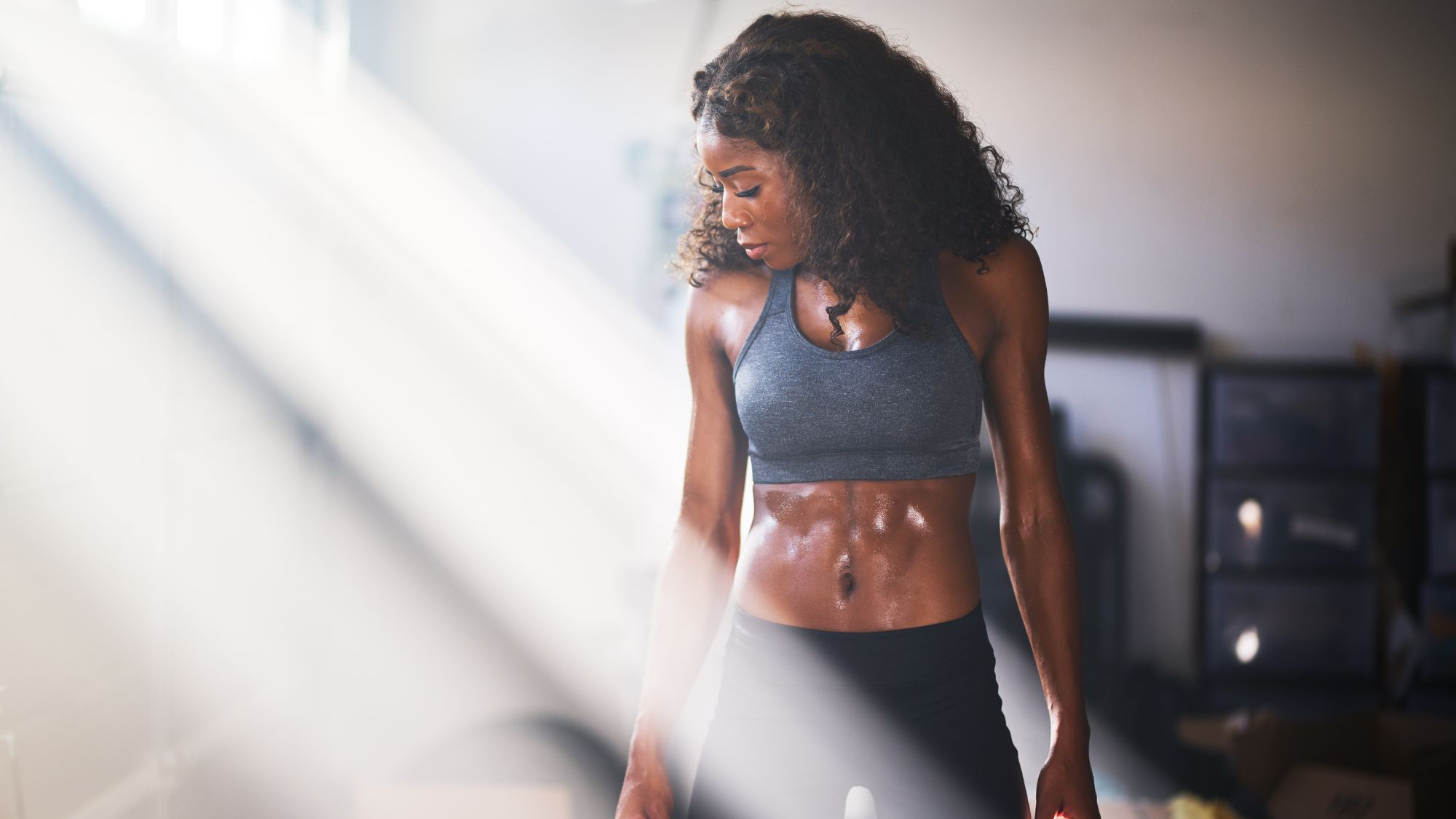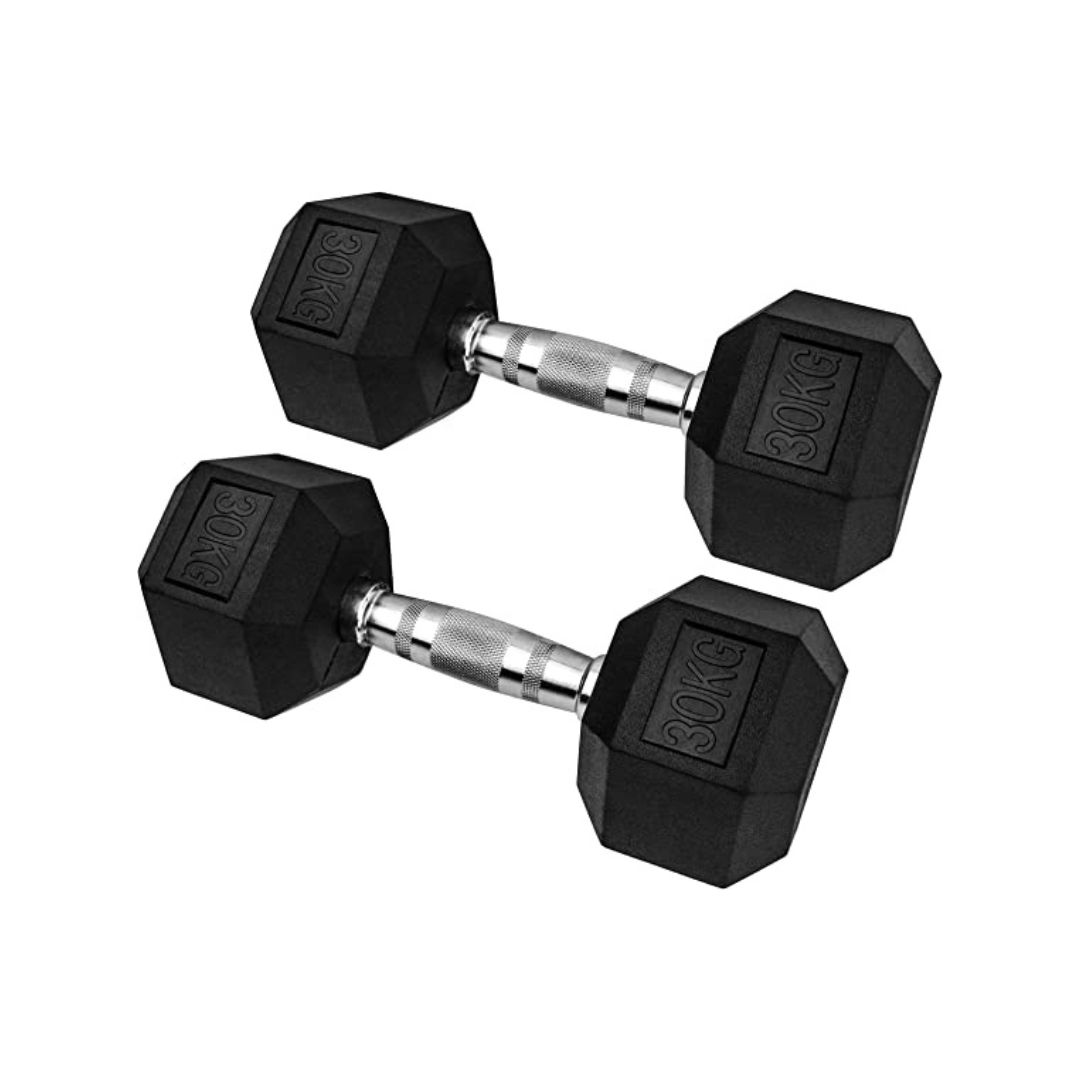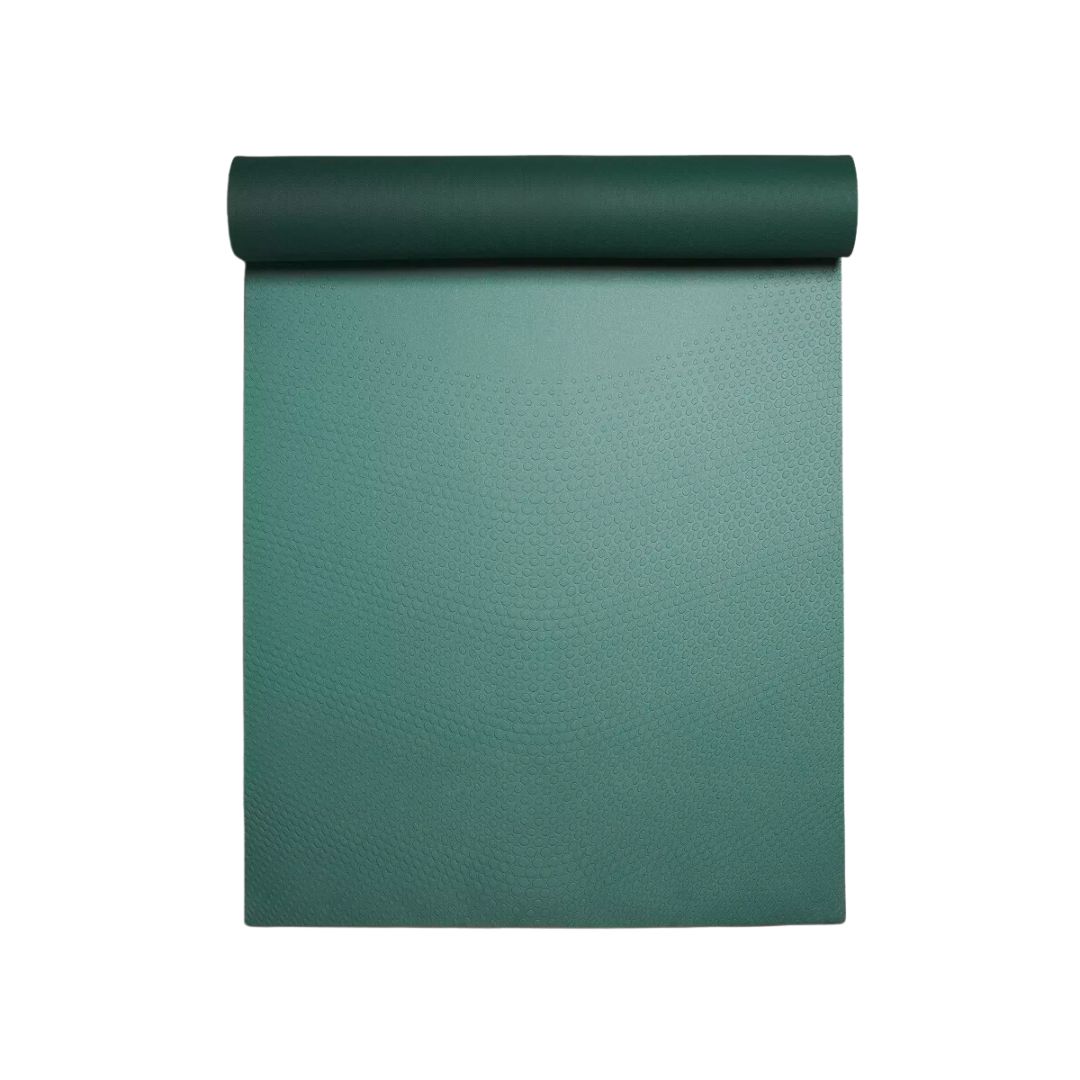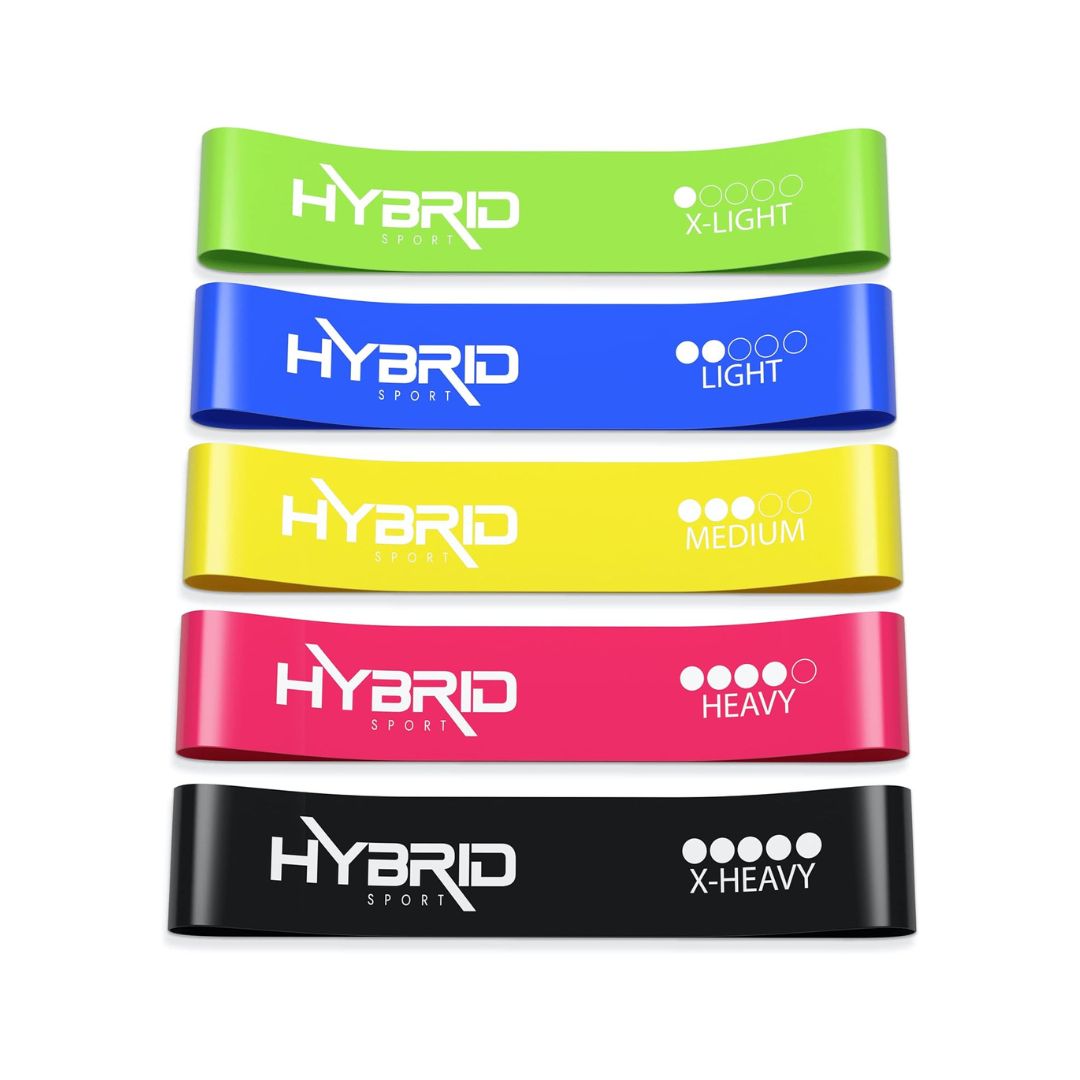PT's weigh in: what's a more effective workout, resistance or strength training?
Get the expert-backed low-down.


Resistance training has long been hailed as the foundation of longevity. But when it comes to resistance training vs strength training — what’s the difference?
Well, on the surface, not much as the two phrases are often used interchangeably. However, after speaking to experts in the industry, it turns out that resistance training works as an umbrella term under which strength training falls. Meaning? “While all strength training is technically resistance training, not all resistance training can be classed as strength training,” level 3 qualified personal trainer and founder of platform LDN MUMS FITNESS Sarah Campus explains.
Over the past few years, there’s been a surge of interest in resistance training — most notably strength training. One reason given for its popularity? “Strong female influencers, whether they're athletes, fitness professionals, or celebrities, are leading by example and inspiring other women to embrace strength training as part of a healthy lifestyle,” Liz Patient, certified Pilates instructor and founder of Pilates for Runners, notes. “This representation plays a crucial role in breaking down traditional gender stereotypes and encouraging women to pursue activities traditionally associated with masculinity.” And secondly? “There's also a growing understanding of the extensive benefits of strength training beyond fat loss,” Patient adds.
If you're keen to find out more and uncover who resistance training vs strength training might benefit, stick right here. We asked PTs to get stuck in and debunk the differences between the two. You might also be interested in the best strength training workouts and the top weight lifting exercises, while you're here.
Resistance vs strength training: what's the difference?
What is resistance training?
Let’s start from the top. “Resistance training encompasses any form of exercise where you lift or pull against resistance,” says Campus.
And PT Patient agrees, stating that this could include completing movements with: “Your own body weight, resistance bands, or equipment like kettlebells and dumbbells, to stimulate muscle growth, strength, and endurance.”
So technically speaking, you're resistance training every time you practise Pilates, do a bodyweight squat, or level up a lower body workout with a resistance band. The same could be said for every time you carry your food shopping from the supermarket shelves to your kitchen. Or use your favourite pair of dumbbells to bicep curl.
Celebrity news, beauty, fashion advice, and fascinating features, delivered straight to your inbox!
So what's strength training?
The clue is in the name. At its most basic level: “Strength training is any form of exercise that involves using weights or resistance to build strength in your muscles,” Campus says.
“It typically involves lifting heavier weights in less reps and more sets with a longer rest in between,” she continues. “The larger rest gap is necessary due to the increased workload put onto the muscles; they need the extra time to recover before the next set.”
The key to strength training is progressive overload. “This is where the intensity and difficulty of the exercises are gradually increased over time,” Patient says. This progression can be achieved through various methods, such as lifting heavier weights, increasing the number of repetitions or sets, or reducing rest intervals between exercises.
Patient explains that by doing so, you can continually challenge your muscles, prompting them to adapt and grow stronger over time. “This adaptation process is fundamental to the effectiveness of strength training and leads to improvements in overall muscular strength, endurance, and functional capacity,” she adds.
Resistance vs strength training: Which one should I choose?
If there’s one thing to take away from this article it’s that both resistance training and strength training have their many (many) merits. But they happily co-exist with different goals in mind.
8 benefits of resistance training
“Resistance training is a versatile and inclusive form of exercise that offers a wide array of benefits for everyone, ranging from improved health outcomes to enhanced athletic performance,” Patient says.
So, you might decide to resistance train because:
- You’re new to resistance training and are looking for a place to start to increase your confidence. All you need to get started is your body weight or a couple of resistance bands. Or you could try our beginner gym workouts.
- You want to maintain and increase lean body mass, along with boosting endurance and muscle strength. According to the American College of Sports Medicine, resistance training is the ‘most effective method’ of doing so. “Resistance training can significantly enhance athletic performance for individuals involved in other sports or physical activities,” Patient explains. “For runners, in particular, incorporating resistance training into their regimen can be highly advantageous.”
- You want to promote bone development — there have been various studies showing resistance training can see a 1% to 3% increase in bone mineral density.
- You want to give your mental health a boost. Movement is medicine, after all.
- You want to improve the quality of your sleep. Now we’re not saying one round of resistance training will help you sleep easily, but as researchers concluded in this review: “resistance exercise may be an effective intervention to improve sleep quality.”
- You want to prevent injury. One paper stated that the physiological adaptations seen consequent to resistance training on bone, connective tissue and muscle do imply "enhanced protection against injury" for individuals who participate in such a training program.
- You want to increase mobility.
- You want to prevent or control chronic conditions. Whether that’s diabetes, back pain, arthritis, depression, obesity and pain management, Patient adds.
11 benefits of strength training
While Olympic weightlifter Haylene Ryan-Causer, who is the co-founder of London wellness brand Café Volonte, explains, you might want to try strength training - essentially a form of resistance training - if:
- You want to boost your strength: “Strength training is designed to improve muscle strength, endurance, and size," she explains.
- You want to improve your endurance
- You want to grow your muscle mass
- You want to boost your metabolism: As this study shows and as Ryan-Causer explains, another great benefit of building lean muscle mass is that it increases your resting metabolic rate. "This leads to more efficient calorie burning and easier weight management," she highlights.
- You want to increase your bone density
- You want to improve your posture, balance and coordination: “A stronger body contributes to better posture, balance, and coordination which has also been associated with longevity,” Ryan-Causer adds.
- You want to improve your overall quality of life: Finally, “by maintaining muscle mass and mobility, we can look forward to a better quality of life as we age," the expert concludes.
5 PT-approved resistance training workouts
1. 10 Lower Body Resistance Band Moves in 10 Minutes
What? Resistance bands are a sure-fire way to add some heat to any bodyweight exercise. Don’t believe us? Follow this workout from Campus and add them to your next set of squats, clams and kickbacks.
Why? “This is a great lower body workout using just a resistance band - works lower body and core muscles,” Campus tells us.
How long? 10 minutes.
2. 12-minute upper body resistance band workout
What? You’ll need a long, lightweight resistance band to complete this simple and straightforward upper body workout from workout instructor Maddie Lymburner. It includes two rounds of six-minute intervals with 45 seconds on, 15 seconds off.
Why? As Lymburner confirms, this is a quick circuit that focuses on biceps, triceps, shoulders, back and chest.
How long? 12 minutes.
3. Full body calisthenics workout with Lucy Lismore
What? Tried a calisthenic workout before? Combining some of the best bodyweight exercises, this style of training often requires zero equipment and contains exercises like pushups, crunches, and planks. PT Lucy Lismore guides you through this beginner and intermediate sesh which gets progressively harder as you go along.
Why? Requiring just your body weight, calisthenics workouts have been proven to boost strength and fitness. So in other words: what’s not to love?
How long? 20 minutes.

4. Abs and glutes resistance band workout
What? Follow certified personal trainer Caroline Girvan’s ab and glute workout using just your own body weight and a resistance band. The first five minutes will fire your abs and the following 10 will focus on your glutes. Each of the 15 exercises are performed for 50 seconds with a 10-second rest. The aim is to repeat this circuit twice.
Why? It contains many of the best core exercises and top glute exercises, with moves like a table-top crunch, opposite hand-to-foot reach, bridge abduction and squat pulses. So along with getting your fix of endorphins, you’re bound to improve muscle strength and tone.
How long? 30 minutes.
5. 30-minute full-body bodyweight strength training workout
What? This includes 10 exercises, with 60 seconds of work, multiple isometric exercise holds thrown in for the fun (and gains) and 20 seconds of rest in between.
Why? According to personal trainers and creators of the class, Juice and Toya: “This workout is efficient for building strength, stability, muscle mass, and it can even be used as a recovery day workout to do between heavy training days.”
How long? 30 minutes.
5 PT-approved strength training workouts
1. 10-minute lower body dumbbell workout
What? 10 exercises feature in this lower body workout with dumbbells. There's a nice mixture of squats, goblet squats, squat-holds and deadlifts. This is all neatly packaged up into a 45-second on and 15-second off-style workout.
Why? “A great lower body workout using a set of medium to heavy dumbbells works the lower body and core muscles,” Campus says.
How long? 10 minutes.
2. 10-minute upper body dumbbell workout
What? Prepare to feel the burn with this upper-body workout which is a type of time under tension (TUT) workout with 45 seconds of work and 15 seconds of rest. If you’re a fan of bicep exercises, like dumbbell curls, this is for you.
Why? “A great lower body workout using a set of medium to heavy dumbbells works the lower body and core muscles,” Campus says.
How long? 10 minutes.
3. 10-minute full-body kettlebell workout
What? Lover of supersets? In this short, sharp and slightly sweaty workout with PT Roxanne Russell, each set is split into minute segments where you’ll perform an exercise (like a goblet squat or shoulder press) for 30 seconds, immediately followed by 30 seconds of one of the best kettlebell exercises — the kettlebell swing. then comes your 30-second break.
Why? Saving time, adding variety and injecting some fun into your workouts, supersets could help you tick off a workout and build muscle in a shorter amount of time.
How long? 10 minutes.
4. 10-minute total body workout using dumbbells
What? Full body workouts are a great idea if you’re short on time and low on motivation, as you can work out the majority of your muscles in one sesh. Expect to see everything from fire hydrants, chest presses and skull crushers — all with your dumbbells by your side.
Why? “[This is a] great total body workout using a set of medium to heavy dumbbells works the upper, lower body and core muscles,” personal trainer Campus explains.
How long? 10 minutes.
5. 20-minute full-body kettlebell workout
What? Using just a kettlebell, YouTube PTs Juice and Toya have pulled together a total body workout that’s split into three different sections, covering lower, upper and full body exercises.
Why? According to the pair: “If you're looking to build strength/muscle, improve your conditioning, or drop some body fat, this is the workout for you!”.
How long? 20 minutes.
Marie Claire UK’s top resistance training must-haves

Coming with a hexagonal finish (which stops these humble dumbbells from rolling away), these easy-grip weights will add some extra resistance to any home workout. If 5kgs is not the right weight for you, there are 27 different options to choose from (ranging from 1kg to 50kg).

The importance of a good workout mat should never be underestimated. Helping to give you and your joints all the support you need as you squat, burpee and mountain climb, we named this seriously grippy and cushioned offering as one of the best gym mats for good reason.

Whether you’re completing warm-up exercises or you’re using the heavier bands to add some fire and help activate your glutes and legs, there’s a variety of resistance to enjoy with these short-loop resistance bands.
Is bodyweight training the same as resistance training?
Bodyweight training is a form of resistance training. Remember: resistance training works as an umbrella term under which bodyweight training (along with the likes of weight and resistance band training) fall into.
That’s because resistance training can be categorised as ‘anything that creates resistance against gravity’. So when you complete bodyweight exercises, like a squat, push-up, or a lunge, you are essentially using your own body to create resistance against gravity.

Rebecca, or Becks, is a freelance journalist with more than ten years of experience in the industry. She specialises in all things health and lifestyle and has written for a number of brands including Women's Health, Stylist, the Evening Standard, Good Housekeeping, The Telegraph, Live Science, Tom's Guide and Fit&Well. Becks also writes copy for a number of brands and small businesses.
When she's not weight training, tracking down the best gym leggings, reading a book or at her desk typing away, you'll find her in the kitchen perfecting a new recipe or bake.



![30 Minute Full Body Strength Workout [No Equipment + Modifications] - YouTube](https://img.youtube.com/vi/9FBIaqr7TjQ/maxresdefault.jpg)




